The Pac-12’s strength is in the eye of the beholder. The conference has quite obviously lacked in the “major national title contenders” department for a bit, and its resident blue blood, USC, has won just 13 games in two years. The conference has fallen far behind other power leagues in the revenue department, and there’s nothing indicating that shortfall is going to get better anytime soon.
That said, the Pac-12 was still better, on average, than the ACC last year. It might not have had a Clemson, but Pac-12 had five SP+ top-30 teams to the ACC’s two, and it had only one team below 90th, while the ACC had three. There is depth and quality here if you squint just right.
Of course, a good portion of that depth is in the North division. The South features three of the conference’s four worst-projected teams, and its national title relevance will likely depend on USC getting its act together. Ask anyone who has put money on the Trojans these past few years how they feel about those odds. And after you do so, let’s preview a division in transition.
Jump to: Colorado | Arizona | UCLA
Arizona State| Utah | USC
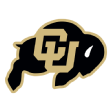
Head coach: Karl Dorrell (first year)
2019: 5-7 (3-6 in the Pac-12), 81st in SP+
2020 projection: 3-9 (2-7), 91st
Five best returning players: WR K.D. Nixon, LB Nate Landman, RT William Sherman, SS Derrion Rakestraw, NB Mark Perry
Almost without fail, a veteran coach will have a complicated résumé. You’re going to end up with some solid successes and failures to your name.
Acknowledging that, though, Karl Dorrell has quite a complicated college football résumé. He got his first coaching breakthrough as Rick Neuheisel’s offensive coordinator at Colorado and Washington and did pretty well. After a few years in the pros, he became head coach at his alma mater, UCLA, and while he fared better than UCLA has of late, he still averaged just seven wins and a No. 43 SP+ ranking. Following a few more years in the pros, he signed onto a tough gig as Vanderbilt’s offensive coordinator under Derek Mason and bombed.
With Mel Tucker unexpectedly leaving Colorado for Michigan State after signing day in February — months after saying “there’s no transfer portal in the real world,” no less — CU asked Dorrell to return to Boulder. Both he and the Buffaloes get a shot at redemption.
Perhaps due to the awkward timing of Tucker’s departure, Dorrell held a lot of Tucker’s staff in place: Longtime CU assistant Darrin Chiaverini is offensive coordinator, and Tucker hire Tyson Summers remains as defensive coordinator.
The key elements of the passing game — quarterback Steven Montez, his top two targets (second-round draft pick Laviska Shenault Jr. and Tony Brown) and his left tackle (Arlington Hambright) — are all gone.
The primary options at QB are senior Sam Noyer (41 career passes), junior Tyler Lytle (one) and incoming freshman Brendon Lewis. Whoever wins the job will have receivers K.D. Nixon and Dimitri Stanley at their disposal, and if the line holds steady after losing basically 2.5 starters, running backs Alex Fontenot and Jaren Mangham could provide solid efficiency.
Defensively, the bar is low. CU ranked in the defensive SP+ top 50 just once in the past decade and nose-dived from 58th to 105th last year. The Buffs were a ghastly 126th in success rate allowed. If those numbers scream “inexperience!!!” to you, you’re onto something: Of the 22 players to log at least 150 snaps, 12 were freshmen or sophomores. At least a few — nickelback Mark Perry and corner K.J. Trujillo, for instance — showed flashes of potential. Plus, blue-chip Alabama transfer Antonio Alfano might still be an option. Overall upside is unknown, but experience levels will improve, and seniors such as defensive end Mustafa Johnson, linebacker Nate Landman and safety Derrion Rakestraw are solid.
It’s going to take quite a few unexpected youth breakthroughs for this team to threaten for a bowl. SP+ projects them 91st, and the schedule features eight opponents ranked 48th or better. The Buffs will have to win every winnable game and pull at least one decent upset to get to .500. So maybe modest goals are best this year: If Dorrell can simply figure out a QB, find a new receiver or two, help Summers rebound from last year’s defensive disaster and then stay on the job in 2021, this year will have worked out all right.
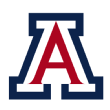
Head coach: Kevin Sumlin (9-15, third year)
2019: 4-8 (2-7 in the Pac-12), 100th in SP+
2020 projection: 4-8 (3-6), 78th
Five best returning players: WR Jamarye Joiner, CB Lorenzo Burns, QB Grant Gunnell, LT Donovan Laie, LB Colin Schooler
Two years ago, Arizona got a chance to hire a coach fresh off of six years of SEC coaching experience. In that span, Kevin Sumlin won 51 games, beat Alabama and led a dual-threat quarterback (Johnny Manziel) to the Heisman Trophy. Sure, returns had diminished enough for him to get fired from Texas A&M, but he had never won fewer than seven games in a season. And in Khalil Tate, he was inheriting one of the most exciting players of the previous season. This seemed like a fantastic arrangement.
Arizona’s main rival, meanwhile, hired an ESPN commentator in his mid-60s. Herm Edwards hadn’t coached in college since 1989 and hadn’t coached at all in a decade. Based purely on résumé, Arizona won the coaching carousel over Arizona State.
That doesn’t tend to count as much as we might think. Two years later, these hires look just slightly different. Edwards hasn’t been amazing at Arizona State, but he is 15-11, his past two recruiting classes have ranked in the 20s and he has found his quarterback of the future in Jayden Daniels. Sumlin, meanwhile, is 9-15 with classes ranked 57th and 70th. Tate ranked second in Total QBR in 2017 and 47th and 52nd the past two years. Injuries hampered his development, and Sumlin and coordinator Noel Mazzone couldn’t make up the difference.
As long as you’re still employed, though, you’ve still got time to turn things around. And if it happens for Sumlin and the Wildcats, it might be because of the guy who stepped in for an injured Tate last season. Grant Gunnell surpassed Tate’s passing numbers, and despite youth and inferiority in the rushing department, he nearly matched Tate’s Total QBR as a freshman. He’ll helm a passing attack that includes all but one of last year’s wideouts — sophomore Jamarye Joiner is particularly exciting — plus five O-line regulars. Running back J.J. Taylor is gone, but the trio of Gary Brightwell, Nathan Tilford and Bam Smith combined to rush for 100 more yards than Taylor on 11 fewer carries.
It’s harder to find good things to say about the defense. The Wildcats have averaged a No. 93 defensive SP+ ranking since 2015, and they bottomed out at 114th last fall. Linebacker Colin Schooler is dynamite, but new defensive coordinator Paul Rhoads doesn’t inherit much else. Arizona was decent at big-play prevention but was positively dreadful in terms of efficiency: The Wildcats were 105th in passing success rate allowed and 130th, dead last, in rushing success rate. They didn’t have youth as an excuse, either.
The front seven will see solid continuity (if that’s a good thing), but the secondary loses its top three. Lorenzo Burns is an excellent cornerback, but he is the only known quantity.
Rhoads will need to work miracles. Even with a solid offense, Arizona will still face five top-40 opponents in its last six games of the year, meaning the Wildcats will likely need to win nearly every winnable game early on to bowl. SP+ gives them only a 29% chance.
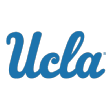
Head coach: Chip Kelly (7-17, third year)
2019: 4-8 (4-5 in the Pac-12), 79th in SP+
2020 projection: 6-6 (4-5), 60th
Five best returning players: DT Osa Odighizuwa, WR Kyle Philips, LB Leni Toailoa, RT Jake Burton, QB Dorian Thompson-Robinson
The UCLA brand has seen better days. A couple of weeks ago, UCLA players announced in a letter that they did not trust the school to act in their best interest and demanded that third-party officials be on hand to monitor UCLA’s coronavirus-related health protocols. Last week, Under Armour declared it was trying to get out of its massive contract with the school, which would have crippling financial implications.
While it feels strange writing a 2020 season preview at all right now, it therefore feels even stranger for UCLA. But under more normal circumstances, we’d be talking about how utterly enormous this season is for both UCLA’s and Chip Kelly’s football futures.
After winning 37 games, with three consecutive top-20 SP+ finishes, in Jim Mora’s first four seasons, the Bruins won only 10 in his last two years. That Kelly came in and tore the house down to the studs wasn’t a surprise, but after a 3-9 debut, UCLA didn’t really improve at all in his second year.
The Bruins will enjoy high continuity in key areas. Junior quarterback Dorian Thompson-Robinson returns for his third year as Kelly’s starter, and he gets back four of last year’s top five receiving targets, including efficient sophomore Kyle Philips, big-play threat Chase Cota and utility man Demetric Felton (331 rushing yards, 594 receiving yards). Plus, of the eight linemen who logged over 100 snaps last year, six return, including three-year starting tackle Jake Burton.
On defense, a secondary that was painfully young in 2019 — 10 players saw at least 250 snaps, and seven were freshmen or sophomores — boasts high levels of continuity, as does a line anchored by disruptive senior Osa Odighizuwa (10 TFLs, 16 run stuffs). Because of this, SP+ projects solid improvement from the Bruins. But they need a lot of improvement to build any sort of buzz for this buzzless program.
There are a couple of losses for which the Bruins must account. Tight end Devin Asiasi and running back Joshua Kelley were both mid-round draft picks and efficiency options, while the linebacking corps faces massive turnover, losing five of last year’s top six tacklers. A couple of former high-level recruits, Elijah Wade and Bo Calvert, could get much bigger opportunities to live up to their hype.
The season probably depends on Thompson-Robinson, though. In the moments in which he lives up to his blue-chip hype, UCLA follows suit. In the Bruins’ four wins, he completed 67% of his passes with a 167.3 passer rating; in their losses, 55% and 118.2. One mistake begat another and another, and reading his body language told you what was about to happen, good or bad.
There are wins on this schedule if UCLA can take them. The Bruins somehow face only two opponents projected higher than 40th in SP+, which projects them as a favorite or one-score underdog in nine games. But you lose all benefit of the doubt when you crater as they have.
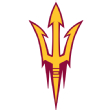
Head coach: Herm Edwards (15-11, third year)
2019: 8-5 (4-5 in the Pac-12), 45th in SP+
2020 projection: 7-5 (5-4), 40th
Five best returning players: QB Jayden Daniels, WR Frank Darby, CB Jack Jones, S Aashari Crosswell, DE Jermayne Lole
I talk a lot about standard downs and passing downs (second-and-8 or more, third-and-5 or more), and I find myself sometimes thinking of the former as the game-plan downs and the latter as the playmaker downs. Staying on schedule is the name of the game in football, but when you fall behind, someone needs to step up and make a play.
For a freshman, Jayden Daniels was dynamite at the latter last season. On passing downs he completed 60% of his passes at 17 yards per completion, with nine touchdowns, only one interception and a 7.8% sack rate that wasn’t great but wasn’t terrible.
Thriving in these situations requires poise and ability, and Daniels, a blue-chipper from San Bernardino, California, clearly has plenty of both. Now he needs a scheme that prevents him from having to make plays so much. While Arizona State was a decent 19th in passing downs SP+ last fall, the Sun Devils were 108th on standard downs.
To address this, Herm Edwards, entering the third year of the final act (we assume) of his coaching career, replaced Rob Likens with Boise State’s Zak Hill.
Hill served four seasons as BSU’s OC and led the Broncos to a decent No. 38 ranking in offensive SP+ last season — for comparison, ASU was 72nd — despite not only dealing with a freshman QB of his own (Hank Bachmeier) but also shuffling things around when Bachmeier got hurt. We’ll see how his balanced approach works with the loss of running back Eno Benjamin, four of last year’s primary seven linemen and wideout Brandon Aiyuk, who enjoyed a huge senior season.
Daniels will have Frank Darby, at least. The senior caught 31 balls for 616 yards and eight scores; he’s outstanding, but he’s also the only returnee who caught more than eight passes. The sooner blue-chip freshmen receivers Johnny Wilson, Elijhah Badger and LV Bunkley-Shelton can look the part, the better.
Hill isn’t the only new coordinator. Danny Gonzales is now New Mexico’s head coach after improving ASU’s defense from 86th to 41st in defensive SP+ last year. You’ve probably heard of his co-replacements: Antonio Pierce is a former Giants linebacker and Super Bowl champion, and Marvin Lewis is, well, Marvin Lewis. The longtime former Cincinnati Bengals head coach spent last year as a “special advisor” to Edwards and is now back in the game.
Not only are Lewis and Pierce evidently moving from Gonzales’ 3-3-5 to more of a 4-3 after limited spring ball, but they’re also losing four of last year’s top six linemen. That screams “depth issues.” The Sun Devils have exciting pieces elsewhere, though. Safeties Evan Fields and Aashari Crosswell and linebackers Darien Butler and Merlin Robertson are playmakers, and corners Chase Lucas and Jack Jones are solid.
SP+ thinks of ASU as a borderline top-40 team, but a schedule that features only three other top-40s should make for another solid season. Daniels’ upside gives ASU the same as well, but there’s a lot of change to account for here.

Head coach: Kyle Whittingham (131-64, 17th year)
2019: 11-3 (8-1 in the Pac-12), 12th in SP+
2020 projection: 8-4 (6-3), 30th
Five best returning players: TE Brant Kuithe, WR Bryan Thompson, DE Mika Tafua, LB Devin Lloyd, RB Devin Brumfield
A bad final act screws up how we view the whole play.
For 12 games, Utah’s 2019 season was everything we thought it could be. With a veteran backfield (QB Tyler Huntley, RB Zack Moss), typically vicious play in the trenches and a seasoned secondary, Kyle Whittingham’s Utes were ready for another program breakthrough. They ranked in the mid-30s in SP+ every year from 2013-16, then rose to 25th in 2017 and 17th in 2018. They rose even further last fall, peaking at seventh (and fifth in the AP poll) as they headed into the Pac-12 title game at 11-1.
There weren’t many highlights after that. The Utes got pushed around by Oregon in Santa Clara, demoted to the Alamo Bowl and pummeled by a more motivated Texas. Combined score in these two games: opponents 75, Utah 25.
Granted, they still won 11 games and finished 12th in SP+. Last year was still clear affirmation of the system Whittingham has spent the past 16 years reinforcing. But he has some retooling to do now. Huntley and Moss are gone, as are all-conference left tackle Darrin Paulo, three of last year’s top four defensive linemen (including ace pass rusher Bradlee Anae) and six of last year’s top seven defensive backs. There was some uncertainty about defensive coordinator Morgan Scalley’s role with the team after an external review of a text message he sent in 2013 that contained a racial slur but it was announced Wednesday that he will retain the position with a significant pay cut. The school has also rescinded their offer of head-coach-in-waiting to Scalley.
Despite all of this turnover, SP+ still sees the Utes as a top-30 team and basically a co-favorite in the Pac-12 South. If home field advantage actually exists in 2020 — it admittedly might not — then it’s noteworthy that the two best conference foes on the schedule (USC and Washington) each come to Salt Lake City. A South title in a rebuilding year would be a statement of its own, even if the win total shrinks a bit.
Before spring ball was halted, the QB competition was primarily between South Carolina transfer Jake Bentley and Texas transfer Cameron Rising. Both were well-regarded recruits, and while Bentley brings more experience to the table, Rising spent a redshirt year learning coordinator Andy Ludwig’s attack. The line returns every starter but Paulo, and the skill corps is loaded with upperclassmen, from running back Devin Brumfield, to receivers Britain Covey, Jaylen Dixon, Bryan Thompson and Samson Nacua, to tight end Brant Kuithe. Thompson and Kuithe averaged 20.4 yards per catch combined.
The best thing about the defense is its track record. The Utes haven’t ranked outside of the defensive SP+ top 40 since 2006, and they were top 20 each of the past two years. It’ll be hard to avoid regression, though, as free safety R.J. Hubert is the only DB to log more than 50 snaps last year. Whittingham signed blue-chippers in key areas of need — safety Clark Phillips III and ends Van Fillinger and Xavier Carlton — but the turnover is going to hit pretty hard.
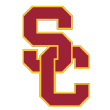
Head coach: Clay Helton (40-22, sixth year)
2019: 8-5 (7-2 in the Pac-12), 22nd in SP+
2020 projection: 8-4 (6-3), 17th
Five best returning players: QB Kedon Slovis, WR Amon-Ra St. Brown, DE/OLB Drake Jackson, WR Tyler Vaughns, NB/CB Greg Johnson
Statistical projections have had the tendency to overrate USC over time, primarily because of excellent recruiting rankings. However, that clearly wasn’t going to be the case this fall, not on the heels of a class ESPN ranked 54th in the country, right between Missouri and Indiana. Clay Helton’s 2020 class was both tiny (13 players) and mostly lacking in instant-impact guys, especially on defense.
USC is 13-12 over the past two years and doesn’t have a recruiting profile to prop it up anymore. And the Trojans are projected to win the South all the same.
Never tell me numbers don’t have a sense of humor.
What’s the perceived driver of improvement this time? Returning production. USC’s got more of it than just about anyone else in FBS.
For starters, the Trojans have the best returning quarterback in the conference and one of the best in the country. Kedon Slovis stepped in for injured starter JT Daniels (who has since transferred to Georgia) in the first game and thrived in first-year coordinator Graham Harrell’s system. He threw for 3,502 yards in basically 10.5 games, and USC lurched from 46th to ninth in offensive SP+. He’s back, as is basically every running back and all but one primary receiving target. Michael Pittman Jr. is now an Indianapolis Colt, but Tyler Vaughns and Amon-Ra St. Brown still combined for 1,954 yards last year. Recent star recruits such as Drake London, Kyle Ford, Bru McCoy and incoming freshman Gary Bryant (a top-100 prospect) could be ready to thrive as well. The biggest question on offense could be the tackle position — all three interior linemen return, but there’s turnover on the edge.
Defense was the issue for USC last year; the Trojans were 60th in defensive SP+, their worst ranking since 2000, so Helton replaced coordinator Clancy Pendergast with jettisoned Texas DC Todd Orlando. At Texas, Orlando dealt with a young defense that had a particularly banged-up secondary. At USC, he inherits a defense that was young and had a particularly banged-up secondary.
Of the 23 defenders to take at least 100 snaps last year, 21 are slated to return, and only four are seniors. That’s how young USC’s defense was last year. The Trojans still lack a bit in known quantities — edge rusher Drake Jackson is awesome, linebacker Kana’i Mauga and safety Talanoa Hufanga have disruptive streaks and Greg Johnson and Olaijah Griffin are high-level cover men. Run defense will make or break the defense, though; USC was an inexcusable 120th in rushing success rate allowed last year. Experience will help, but how much?
The schedule is about as tricky as a Pac-12 South slate can be. The Trojans are scheduled to start with Alabama in Arlington, they play Utah on the road, and they draw Oregon and Washington in cross-division play. Alabama’s probably the only truly likely loss on the schedule, but a few key tossups will decide both USC’s, and let’s be honest, Helton’s respective fates.
